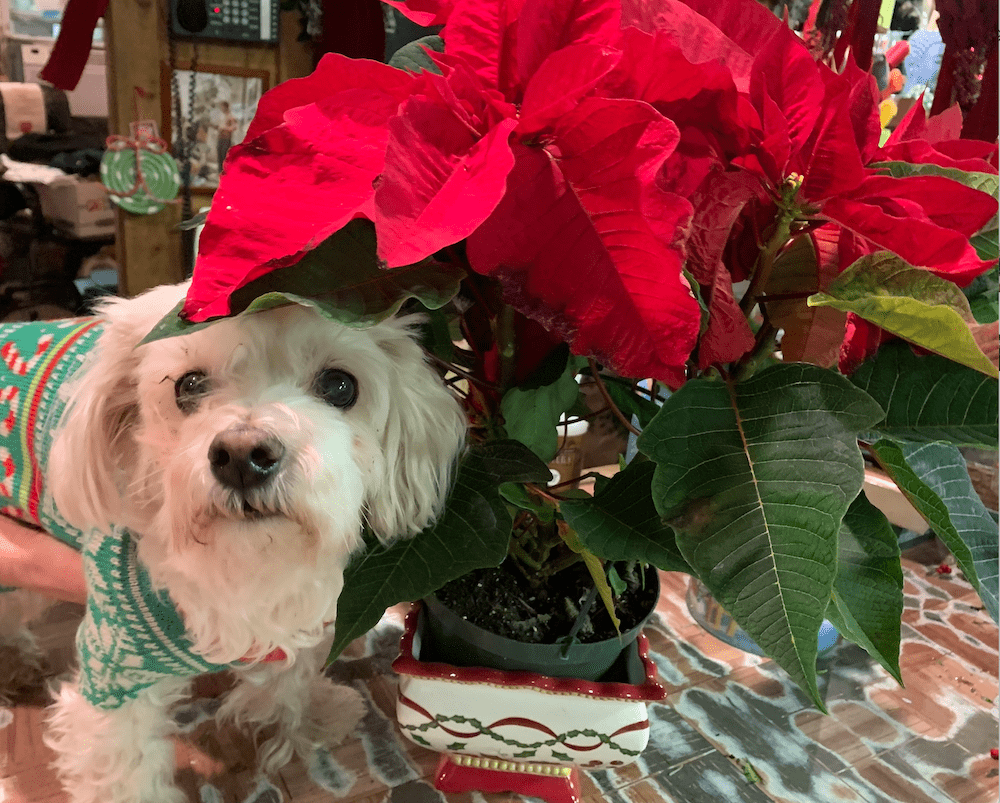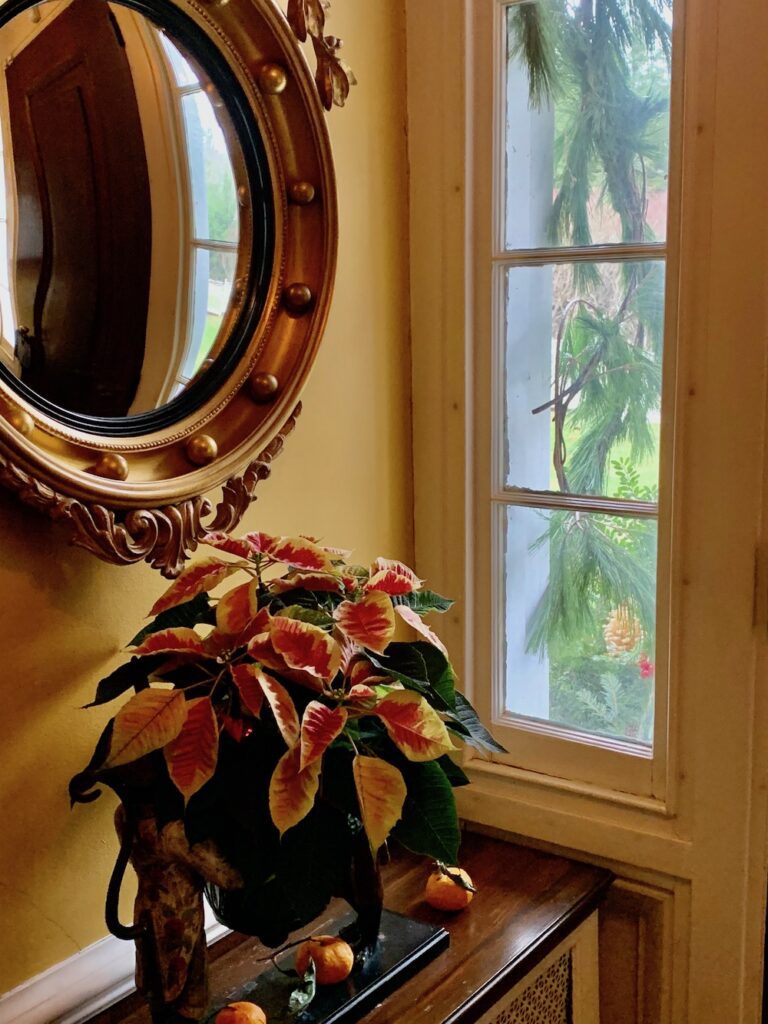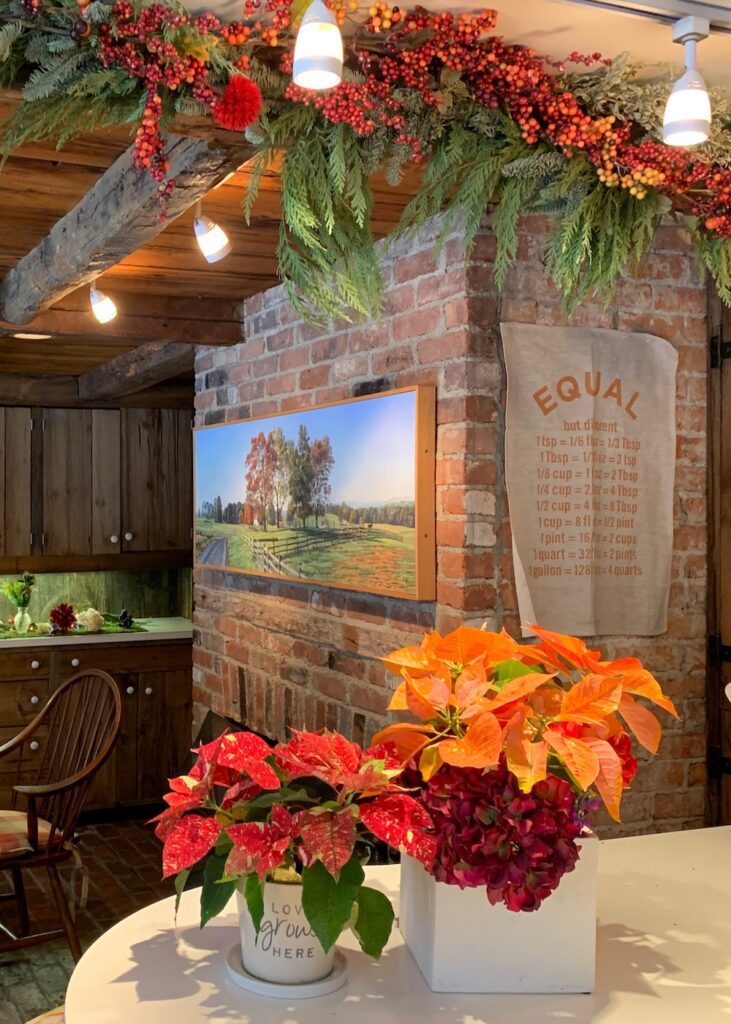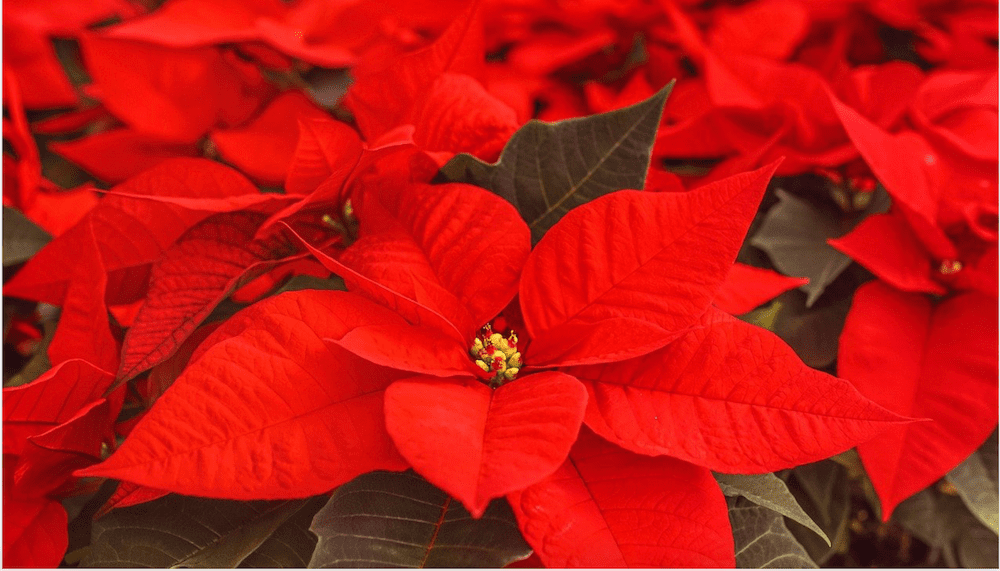Beloved Holiday Poinsettias Plagued by False Rumor

The December flower continues to have a bit of a problem. Rumors persist that poinsettias are harmful to pets and young children.
This is why the Society of American Florists (SAF) sent out some ammunition to combat a prevailing myth to flower shops around the U.S.
In the past few years, research at Ohio State University revealed that a pet or a 50-lb. child would need to ingest more than 500 leaves to have any side effects.
And obviously, that is a lot of leaves to consume- and highly unlikely for pet or person.
According to Professor Robert McMahon, at Ohio State University, the myth may have arisen from a report that a small child died in 1919 after chewing on a leaf – a report that wasn’t substantiated. Or perhaps that some of the poinsettia’s distant botanical family have toxic latex sap such as Euphorbia. But this does not apply to the ones you routinely see at florists and grocery stores.
Although there are many holiday plants on the market, “poinsettias continue to be the number one choice for consumers for the holiday season in North America,” says Jane Price, sales and marketing director from Northland Floral.
With 150 varieties and sizes, Price adds that “red” continues to be the most popular.
“Market demand is still heavy to red, regardless of what is new and different,” she says. “Maybe even more so as people are looking for tried, true and safe these days. There is a demand for novelty i.e. Autumn glow peach, cinnamon, burgundy, Princettia, but minimal in comparison to total consumer demand.”
However, because coral is the red this holiday season as a trend, more stores are now offering apricot colors which are also selling well.

Notice how I used this apricot poinsettia and accessorized it with oranges to give it a look that doesn’t scream Christmas and can last till spring.

Another option is to mix colors as I did here. In fact, to make it a little more interesting, I added a faux hydrangea to one of the poinsettias for a counter in my Bedford kitchen. I also continued that theme by using garland above it that I attached with hooks into the wood beams and then added flourishes of coral and red faux flowers. When guests would arrive, I would also take some of the poinsettias and put them in the garland for short-term dazzle. It’s all about embracing color and of course your creativity.
CARE
Because of its origins in Mexico, the big and dramatic flower-like bracts don’t like drafts at all. Bright indirect light will prolong its beauty in your home and just water when the soil surface feels dry.
When properly cared for, they can last weeks or even months until spring if kept in warm conditions to brighten your home. Just put them in interesting pots or even add some faux flowers to the mix to bring other color wheels into your home. But make sure that it wasn’t cold or drafty where you purchased them. That truly is the trick to keeping them alive for many months.
HISTORY
The enchanting legend of the poinsettia dates back several centuries, to a Christmas Eve in Mexico when a little girl named Pepita had no gift to present to the Christ child. Her cousin Pedro urged her to give a humble gift. So, on her way to church she gathered some weeds she found along the road. As she approached the altar, a miracle happened: The weeds blossomed into brilliant flowers. Then they were called Flores de Noche Buena – Flowers of the Holy Night. Now they are called poinsettias.
The big brash plant is named for the first U.S. Ambassador to Mexico, Dr. Joel Roberts Poinsett, who introduced America to the poinsettia in 1828, after discovering it in the wilderness in southern Mexico. He sent some cuttings of the plant back home to his native South Carolina. Over time it became associated with the holidays.
December 12th became National Poinsettia Day upon the death of Mr. Poinsett in 1851 to honor him and the plant he made famous.
The flower is also attached to Christmas because the shape of the poinsettia’s flower is thought to symbolize the Star of Bethelem. And the red color signifies Christ’s blood that was sacrificed and the white represents the purity of that purpose.
As more colors have been created in recent times because of the plant’s popularity and technological innovation, new meanings have not been discussed thought maybe we should consider these ideas. Lavender – since purple is associated with royalty – could mean the majesty of doing good deeds and orange and apricot could be cheerful in your purpose.
Attaching symbolism to all we do elevates the experience and appreciation of the holidays.

Jill Brooke is a former CNN correspondent, Post columnist and editor-in-chief of Avenue and Travel Savvy magazine. She is an author and the editorial director of FPD.
